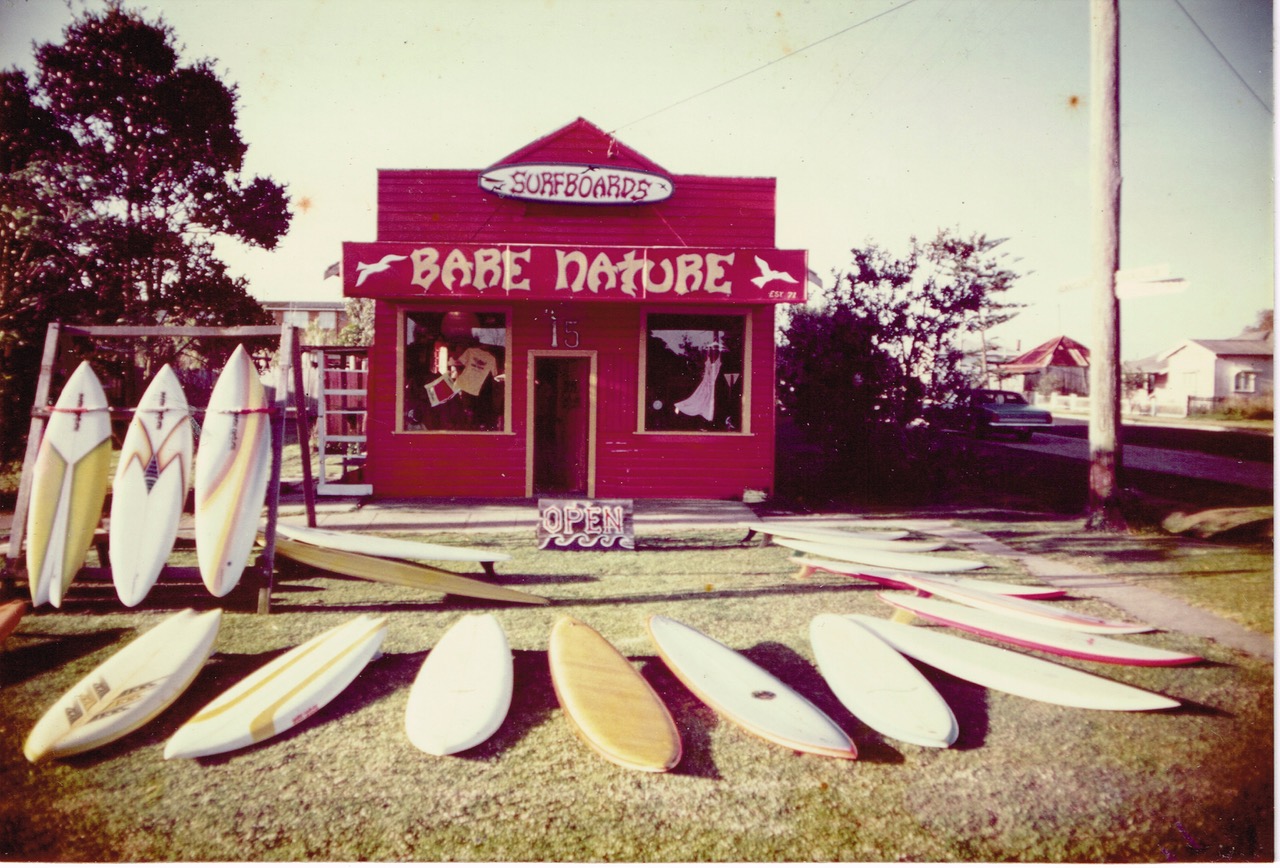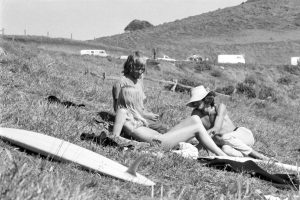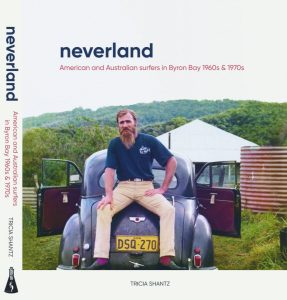
Tricia Shantz has lived in Byron Shire for 40 years, 33 of those in Coorabell. Here she explains the genesis of her book Neverland, a social history that documents the arrival of American surfers in the 1960s and how their creative collaboration with locals started the first ripples of alternative culture in Byron Bay.
Neverland is the story of those early American and Australian surfers who came
to Byron Bay in the ’60s and ’70s; Some of them escaping the Vietnam War, some having been to the Vietnam War, they came escaping an American life basically. They came to live a different life, and of course, they found incredible waves, landscape and climate.

I started out six, seven years ago wanting to write a contemporary history of Byron in the ’70s and ’80s but it was just too big! So, I’ve just done one little part of what was going to be a bigger book, and focused on the arrival of the American surfers and the Australians because they really intermixed, and they changed the culture of the town when they came here. They were rebelling against the norms of society. In many ways, the surfers set the agenda for what Byron was to become, changing it from its industrial working class roots into a culturally diverse town. In retrospect, the influence was immense. They questioned the Vietnam War, conservative politics and societal norms generally.
A lot of people don’t realise how early those American surfers came. A lot of people assume the Aquarius Festival was the turning point in counterculture in Byron Bay. But the first American surfer came in 1959, Bob Cooper, and then in ’61, another very well-known surfer, Phil Edwards came from California and Bruce Brown (who eventually made the film The Endless Summer) was making a film called Surfing Hollow Days.
In those days, Byron was a working-class town, there was whaling until 1965, sandmining on the beach until 1972, a meatworks until 1983, there was the Norco factory on the main street, and these were the jobs you could get. The surfers didn’t want 9-5 jobs. They were entrepreneurial. They created their own jobs and created businesses. They started the cafes, and they made surf films, they started newspapers. Danny Doeppel started the Arts Factory, which created BluesFest, so they were very creative, and culturally they injected something new into Byron.

The Wholemeal Cafe opened in 1974. Derek (Beckner) started The Ribcage which is where Fresh is now. Lester Brien, an Australian, and the first surfing solicitor that came to Byron, opened Dinty’s, which was a raucous wild nightclub/restaurant/bar, where Main Street Burger Bar is now on Jonson Street.
The surfers started surf shops like Bare Nature (where Spell is now). They were unusual because in those days surf shops only sold surfboards. There was no Quicksilver, no Billabong, no Ripcurl. They sold boards but not clothing. Bare Nature sold Hungarian blouses and leather goods from Bill Conner (BC) who then lived on the Gold Coast but later moved to Byron Bay. They were the hang places when the surfers came to town. Bob Newland started Surf Aids which still exists today in the Byron Arts & Industry Estate. He made the first leg ropes around here and board bags.
Rusty (Miller) started the Byron Express in ’73 with Australian David Guthrie. Rusty had come to visit his friend, Garth Murphy. Garth and Rusty had started the business Surf Research in California in the mid 1960s, along with Mike Doyle. Garth had come to Byron and married an Australian woman, Nyarie Abbey, who started the shop Neverland with Marilyn Young (Nat Young’s first wife), which was on Jonson St where the Hot Bread Shop is now. Neverland made clothes and they imported Bali clothes into Australia. And it was psychedelic. When those early surfers arrived, they turned the town from black and white into colour.
Neverland – American and Australian Surfers in Byron Bay 1960s & 1970s
Original stories as told to Tricia Shantz Available in hardback at The Bangalow Newsagency & The Book Room Collective